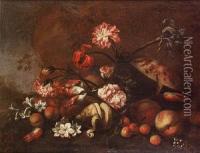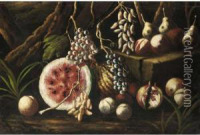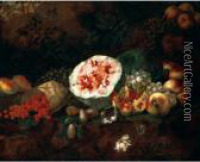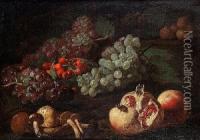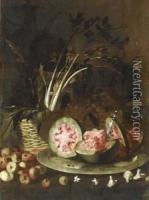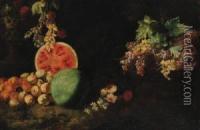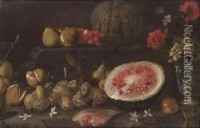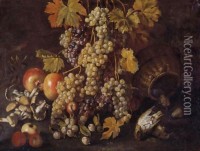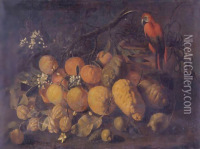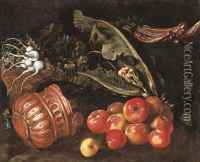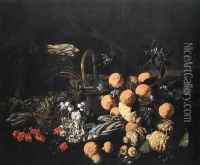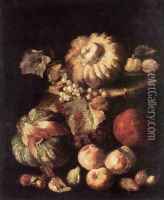Giovanni Battista Ruoppolo Paintings
Giovanni Battista Ruoppolo was an Italian Baroque painter, particularly noted for his vibrant and lush still-life paintings. Born in 1629 in Naples, he was part of the prolific Neapolitan school of painting which was influential across Europe during the 17th century. Ruoppolo's life and career were closely tied to the city of Naples, where he spent most of his life and developed his artistic style.
Ruoppolo's work is characterized by its rich textures, vivid color palette, and intricate composition. He was deeply influenced by the works of other Neapolitan painters such as Luca Forte and Giuseppe Recco, and his paintings often reflect a similar passion for detail and a fascination with the natural world. Ruoppolo excelled in the depiction of fruits, flowers, and food, capturing their appearance with an almost tactile realism that was innovative for his time.
Despite his talent, little is known about Ruoppolo's training or early career. It is believed that he may have been a student of Paolo Porpora or a follower of the style of Giovanni Battista Recco. Ruoppolo began to gain recognition in the 1650s, and his paintings started to appear in the collections of prominent Neapolitan families, as well as in the homes of wealthy collectors and patrons throughout Italy.
Throughout his career, Ruoppolo enjoyed considerable success, and his works were highly sought after. He contributed to the tradition of still-life painting in Italy, which was becoming increasingly popular during the 17th century. His paintings often included allegorical or symbolic elements, sometimes hinting at themes of mortality and the fleeting nature of life, which was a common motif in Baroque art.
Giovanni Battista Ruoppolo passed away in 1693 in Naples. His legacy is preserved in the still-life genre, where his contributions remain significant. Today, his paintings can be found in museums and private collections around the world, showcasing the enduring appeal of his masterful representations of inanimate objects brought to life with vivid realism and artistry.

